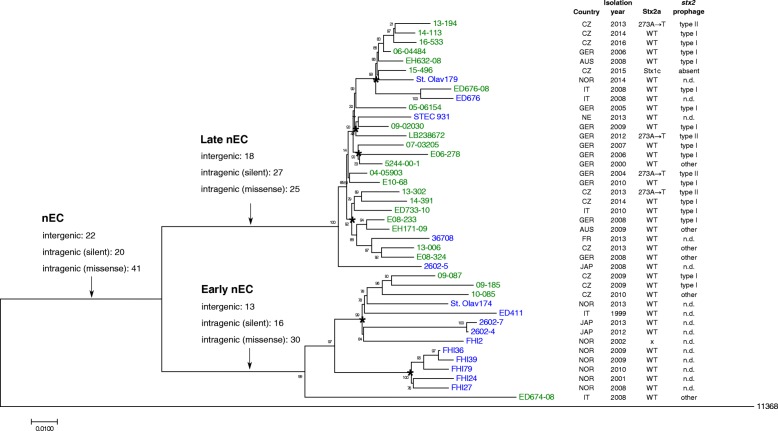Fig. 2.
Detailed whole-genome phylogeny of E. coli O26 nEC (ST29C2). Numbers and categories of SNPs synapomorphic for early nEC, late nEC or nEC in general (Additional file 4: Table S2) are indicated above particular branches. Strains sequenced in this study are denoted in green, strains whose genomic sequences were obtained from other sources are denoted in blue. Nodes supported by both FastTree and Neighbor-Joining methods of tree inference are denoted with asterisks. Countries of origins are abbreviated as follows: AUS, Austria; CZ, Czech Republic; FR, France; GER, Germany; IT, Italy; JAP, Japan; NE, Netherlands; NOR, Norway. The type of stx2a-converting prophage present in particular strain is indicated as in Fig. 4; strains exhibiting significant deviations from coverage pattern and/or mutational pattern characteristic for type I or type II prophages are denoted as “other”. Types of stx2a-converting prophages were not determined for whole genome assemblies obtained from other sources (n.d.). Amino acid change in Stx2a (273A → T) specific for type II prophages is denoted. Core genome phylogeny was constructed from 1,258 variable bases among 4,332,095 validated homologous nucleotide positions. Phylogenetic tree was constructed with FastTree using approximately Maximum Likelihood phylogeny model [60]. Genomic sequence of E. coli O26:H11 strain 11368 (stripped of plasmids, prophages and other horizontally acquired regions [68]) was used as an outgroup

